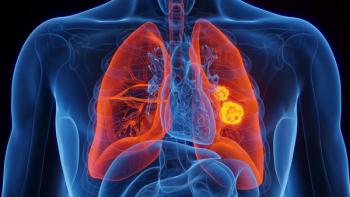
Lung Cancer in Women: More Risk, Less Attention
Current screening criteria in the United States identify fewer women than men who will get lung cancer, creating a perfect storm for what experts during a session at the CHEST Annual Meeting deemed an “invisible epidemic.”
Lung cancer is the most common type of cancer worldwide, and it affects women disproportionately more than men. Even so, current screening criteria in the United States identify fewer women than men who will get lung cancer, creating a perfect storm in what experts during a live session at the
M. Patricia Rivera, MD, FCCP, of the University of North Carolina School of Medicine; and Mary Pasquinelli, DNP, FNP-BC, APRN, of the University of Illinois Hospital and Clinics, presented data that paint an ominous picture for women with lung cancer, starting with theories as to why women are more likely to have it.
Why Are Women at a Higher Risk?
One theory is that women are more susceptible to tobacco-related lung cancer, but Rivera cites conflicting epidemiological evidence. One study, called the
While the odds risk was slightly higher in women who had smoked vs men, the study concluded that those data did not support the theory of increased susceptibility to tobacco-related lung cancer.
Rivera also pointed to a
“They concluded that this increased incidence of lung cancer in certain groups of women—younger women—could not be fully explained by sex differences in smoking behavior,” Rivera said.
Even in never smokers, women are more likely to get lung cancer than men. This poses the question of whether the etiology is different in women compared to men. Some possibilities Rivera noted were genetic mutations, DNA adduct formation, and hormonal factors.
Genetic mutations are a growing topic of conversation, and they present yet another possibility. “p53 suppressor gene mutations are very important in lung cancer, and a higher frequency of these mutations have been found in non–small cell lung cancers from female patients that are exposed compared to male patients,” Rivera said. KRAS mutations, which have been found to affect prognosis, are also more common in lung tumors in women than men, she said.
In a
Higher levels of DNA adducts, or damaged DNA segments that can be the start of a cancerous cell, have been found in lung cancer patients in women compared with men, even after adjusting for smoking, which is another hypothesis when it comes to women’s lung cancer susceptibility.
Hormones could also play a part. “Estrogen, both alpha and beta, have been found to be expressed in normal lungs and in lung tumors,” Rivera said, although it is not yet clear what estrogen's role is in the process.
Rivera cited 2 studies, one that found postmenopausal women treated with hormonal replacement therapy had a higher incidence of lung cancer, particularly poorly differentiated lung cancers and at higher rates of metastatic disease by the time they were diagnosed. Another systematic review and meta-analysis of menopausal hormonal replacement therapy found that women who do not smoke but undergo hormone therapy had an increased risk of adrenal carcinoma of the lung.
There is no definitive answer yet, Rivera concluded, but effort should always be taken to educate patients about smoking and counsel women on the potential risks of hormone replacement therapy.
Why Screening Criteria Are Not Ideal
Cancer screenings are often lifesaving, and Pasquinelli jumped in to discuss concerns specific to women where lung cancer screening criteria are concerned.
The current draft
Pasquinelli first pointed to the
In the Dutch Belgian
She also noted a German trial with a similar criteria of the NELSON trial that showed a statistically significant reduction in lung cancer mortality among women, but not among men.
But the USPSTF guidelines are based on the National Lung Screening Trial, and they may allow many women to be deemed ineligible for screening despite the higher risk of lung cancer seen in various studies.
“These first 3 screening studies showed greater survival benefit in women at lower age limits in smoking limits compared to the national lung screening trial that the USPSTF guidelines are currently based on,” Pasquinelli said.
Despite being more susceptible to lung cancer, are less likely to meet the USPSTF criteria for the following reasons:
- Women smoked less than men, and that was very statistically significant.
- They were less likely to meet the 30-pack year cutoff for the criteria.
- They were diagnosed at earlier stages compared with men, and they are most likely to be diagnosed with stage I lung cancer (22% vs 13%).
They assessed whether the Prostate, Lung, Colorectal, and Ovarian Cancer Screening Trial 2012 risk prediction model, which has 11 variables, could correct for the under-selection of women in the current suggested screening criteria and found that it does correct for the disparity created by the USPSTF guidelines.
“We wanted to be able to see women compared to men who wouldn't have met the screening criteria by USPSTF, but currently you can't screen outside the USPSTF criteria and be paid for it,” Pasquinelli said.
Newsletter
Stay ahead of policy, cost, and value—subscribe to AJMC for expert insights at the intersection of clinical care and health economics.







































